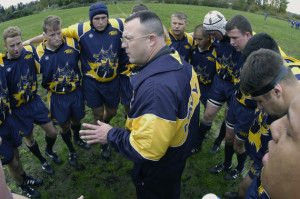A team member knocks on your door and asks if you have a minute. Before you’ve even finished your answer, the team member starts listing off several “very urgent” issues that need to be dealt with, and asks for your advice on what to do.
How do you respond? Do you immediately start offering suggestions for the best courses of action?
That is certainly how I’m wired to respond. I naturally prefer to give people advice. This is partly because I really enjoy helping people, and also partly because I’m wired to think I have all the answers (I certainly do not).
However, it has become increasingly clear over the years that if I truly want to be helpful to people, it is almost always better to ask good questions than it is to have good answers.
When we make the effort to ask good questions, three important shifts occur:
1. We don’t waste time solving a problem that doesn’t need to be solved
When we jump right in and start offering advice, there’s always a significant risk that we don’t fully understand the problem. This means that, at best, we might be solving a superficial problem instead the most important issue. Or, even worse, we might be offering advice that completely misses the mark.
By resisting the urge to start offering advice and begin with a question instead, we can get clarification on the issue, and perhaps even discover the root cause of the issue, or a deeper issue, that is much more important to resolve.
2. We help people develop their capacity to solve issues on their own
By asking people questions to clarify an issue and getting them to offer some ideas for resolving the issue, we encourage their brains to develop new connections, which empowers them to be better able to problem solve in the future.
3. We gradually free up time to focus on what really moves the needle
By training people to realize that we trust them to solve issues that don’t absolutely require our input, we gradually free up more and more time that we no longer have to spend on day-to-day issues.
Instead, we can focus on high-level strategy, developing our team culture, and spending more time serving our team members.
Developing the Coaching Habit
If you’d like some help overcoming the habit of giving advice and developing a new habit of asking questions first, I highly recommend the book The Coaching Habit, by Michael Bungay Stanier. Bungay Stanier (who added his wife’s last name to his surname of Stanier) offers a very practical approach to developing the habit of coaching: asking good questions that help people resolve their own issues.
He also offers seven, very powerful questions – each supported by behavioral and/or neuroscience research – that are designed to make coaching much more effective while also reducing the time we spend in any coaching meeting to around 10 minutes.
For example, one of the questions Bungay Stanier offers is “What’s the real challenge for you here?”
This question is especially useful when a team member lists more than one issue that needs to be solved, either in person or via an e-mail. Instead of trying to resolve each of the issues at hand, we challenge the person to clarify what is the most important issue at hand by responding with, “What’s the real challenge for you here?”
This question is very helpful for three reasons:
- It helps us save time by only spending energy on the most important issue
- It helps the team member to focus on what she or he can do, and what she or he really needs to affect change, instead of placing blame on others or making excuses
- A 1997 study published in the Journal of Educational Psychology suggests that by simply adding the word you to a question we help people find a more accurate answer in less time
As with all of the questions Bungay Stanier offers, one of the most important elements of the effectiveness of the question above is making sure that we wait for a response in silence. Silence can be uncomfortable. When we ask a question and it’s not answered immediately, we may feel a strong urge to ask it again in a different way, or start leading the person toward the answer we want to hear.
Instead, Bungay Stanier urges, we need to learn to patiently endure the silence and wait for an answer before saying anything further. This simple move is one of the keys to saving time while also serving team members by helping them grow both personally and professionally.








This is really good. I’m saving it.
Thanks Don!
Its interesting how often your first inclination is not the best way to deal with an issue.
I completely agree Deborah! One of the questions Michael recommends is “And what else?”, which encourages people to think of alternate solutions. For instance, if someone offers a solution, we say, “Interesting. And what else could you do?”